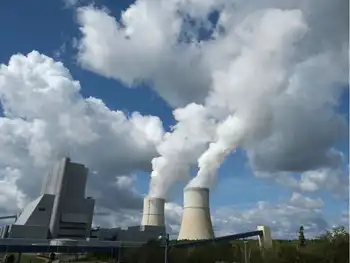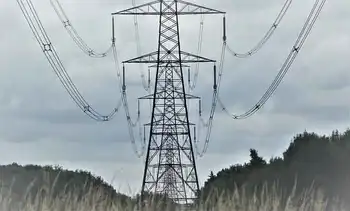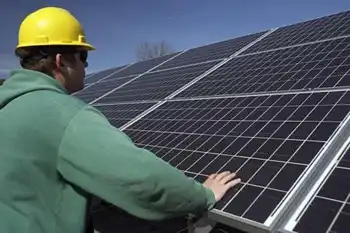Geothermal power touted for Upper Ark
By The Pueblo Chieftain
Substation Relay Protection Training
Our customized live online or in‑person group training can be delivered to your staff at your location.

- Live Online
- 12 hours Instructor-led
- Group Training Available
"This is a big deal," Bill Bennett, energy use adviser for Sangre de Cristo Electric said. "Everyone in the valley should be interested in this project. This is a nonpolluting, renewable power supply that could provide all the electricity this valley needs."
Bennett's comments came during the monthly meeting of the Upper Arkansas Valley Conservancy District, which heard a presentation from Fred Henderson, of Mount Princeton Geothermal LLC.
Gov. Bill Ritter's office has scheduled another meeting on geothermal development.
Last month, the Upper Ark board heard concerns from some residents in the Buena Vista area about the potential impacts of geothermal power generation. Henderson attempted to address those concerns — noise, the potential for earthquakes, land disturbance — during the presentation. "I can't answer all the questions. This is a three- to four-year project," Henderson said. "We need to drill into the deep aquifer before we can even decide where the plant would be."
Bennett's comments came unsolicited when Henderson stumbled trying to estimate what would be needed to hook into the power grid.
"Solar and wind power are located in the middle of nowhere, miles from transmission lines. This is right in the middle of them," Bennett said after the meeting. "California is the king of geothermal. They have 44 locations with 2,700 megawatts of power. Gov. Ritter is talking about a new energy economy, but Colorado doesn't have one drop of geothermal power."
Bennett said Sangre de Cristo's lines could easily accommodate the output from a 10 megawatt plant, adding that such a plant could easily provide most of the 104 million kilowatt hours Sangre de Cristo customers used last year.
"People fight this because they don't understand it," Bennett said. "They should be fighting to get this."
Ironically, geothermal power could have little to do with water rights, even though it would likely be administered by the Division of Water Resources. That's because no water would be consumed in what Henderson described as a "pump and dump" system.
Essentially, water would be pumped up from the heat source in the area — which lies somewhere below the 2,000-foot level if engineering predictions are correct — run through a sort of reverse air conditioner and reinjected into the deep underground reservoir. Six extraction and four injection units would be air-cooled, again using no water.
What deep-well drilling will attempt to show in the next phase of the project is where the reservoir lies, Henderson said.
The cost of drilling will range from $3 million to $5 million and could be completed by mid-2010. Mount Princeton Geothermal has applied for federal stimulus money to complete the work.
Much of the field studies leading up to the drilling were done by students from the Colorado School of Mines. Henderson said they will devote one more year to the Buena Vista area, then move on to similar projects in Idaho.
The students have updated 30-year-old mining investigations that sought to identify pockets of steam, adding seismic, magnetic and gravity data to determine geologic faults. In the 1970s, engineers were looking for steam, but with new technology, hot water alone can be used to generate electricity.
Satellite heat maps and other techniques have identified at least three other hot spots between Salida and Buena Vista, but the Mount Princeton area has the most potential energy of any spot in the state.
"It's under a developed area with homeowners," said Henderson, who has worked as a mining engineer for 50 years.
That creates concerns about noise, which Henderson said would occur, but could be contained in the design of facilities.
He said it is difficult to predict when or where an earthquake could occur, noting there have been small earthquakes in the area in the past. The area is riddled with faults that could shift. However, since water would be pumped back into the ground as well as out, chances are there would be little additional impact.
"That's something we still don't know," Henderson said.
Henderson was led to his current project after being asked to study domestic wells in the area about three years ago.
Wells in the area either provide hot or cold water, indicating an intricate interconnection between faults that is not totally understood.
Still, he said geothermal power is something that needs to be considered in developing alternative energy.
"The wind doesn't blow and the sun doesn't shine all of the time," Henderson said. "This is the baseline alternative energy that you can turn on and off."











